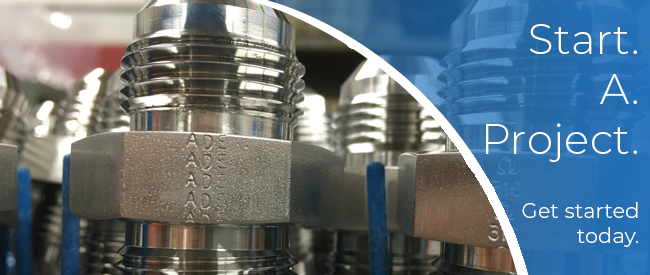Whether you’re in marine, petrochemical, or other industrial industries, your equipment often experiences extreme conditions that can add wear and tear over time. Unfortunately, no matter how hard you try to prevent it, individual parts and entire systems can deteriorate over time, causing leaks. If not identified early enough, these leaks can lead to costly repairs.
Issues like improper installation and overuse are the two most common culprits of unexpected leakage. Not only are they harmful to your system, but they can also prove to be a costly waste of valuable resources, materials, and labor. In fact, a leaky system can cost companies up to $75,000 per year.
In addition to cost, other downfalls of leaky systems include unnecessary energy consumption, reduced performance and reliability, and increased operating and housekeeping costs. To reduce waste caused by leaks, it’s important to monitor your system and address issues as they arise.
Be aware of improper installation.
While improper installation can prove costly, it’s usually an easy fix and one that can be avoided. Often, parts are simply installed incorrectly leading to leakage. Other times, materials are handled and distributed improperly, resulting in part tears or dents you may not notice right away.
The best way to ensure proper installation is by partnering with trusted professionals. Your partners should be able to identify the correct parts for your application, properly install them (or guide you through installation) and troubleshoot issues should they arise.
Examine for overuse or system abuse.
To keep your hydraulic system operating at full capacity, it’s important to regularly monitor for system abuse, identify high-risk areas for damage, and invest in proper materials as needed.
Often, overuse and lack of regularly monitoring your system can lead to leaks. Other times, improper lubrication can result in seals that break down quicker, causing leaks.
If you believe your system is experiencing a leak, the first step in fixing it is to identify the source. Leaks can be tricky to identify depending on whether they are internal or external. However, as soon as notice any fluid outside of the tubes where they belong, it’s time for a repair. From there, you will need to evaluate solutions. If identified early enough, the fix could be a simple as tightening a loose seal or replacing a fitting.
Our solution to reducing leaks and waste.
Your best line of defense to avoid hydraulic system leakages and reduce waste is to invest in proper O-ring face seal (ORFS) fittings. To prevent failure, ORFS fittings are designed to be watertight and perform extremely well in high-pressure environments—they can vacuum gaseous and liquid materials up to 6,000 PSIG (pounds per square inch gauge).
ORFS fittings are a type of parallel threads that work by providing strong seals in places where two pipes or tubes meet and act as an extra barrier to prevent leaks. These seals also eliminate the twisting of tubes during operating and provide support during assembly.
OmegaOne’s O-Ring Face Seal product line is manufactured in accordance with the SAE J1453 specification. Similarly, to our flare and flareless fittings, face seal fittings also function with nut, sleeve, and fitting bodies. There are two different styles of sleeves used with ORFS fittings, mechanical and braze, and OmegaOne manufacturers both styles.
Want to learn more about our ORFS fitting offerings? Click here to contact an OmegaOne team member and discuss your options today.


